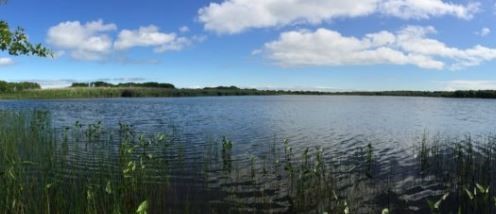Long Island Nitrogen Action Plan - July Newsletter
The New York State Department of Environmental Conservation sent this bulletin on 07/19/2019 02:53 PM EDT |
| DEC Delivers - Information to keep you connected and informed from the NYS Department of Environmental Conservation |
| Share or view as a web page || Update preferences or unsubscribe |
Long Island Nitrogen Action Plan (LINAP) - July Newsletter
|
|
In this month's issue of the LINAP newsletter, we highlight the ongoing nitrogen reduction initiatives lead by our LINAP partners in the Peconic Estuary Program.
Peconic Estuary ProgramIn 1992, the Peconic Estuary received designation as an "Estuary of National Significance" by the U.S. Environmental Protection Agency and the Peconic Estuary Program (PEP) was established. PEP is a collaborative partnership of local, state, and federal governments, citizens, environmental groups, businesses, industries, and academic institutions. PEP's staff and partners support monitoring, research, restoration, collaboration and education to address priority issues within the Peconic Estuary Watershed.
Comprehensive Conservation and Management Plan (CCMP)The Peconic Estuary Program is coordinating with communities and stakeholders surrounding the estuary to develop a path forward to effectively improve the health of the estuary as they revise their 2001 Comprehensive Conservation and Management Plan (CCMP). The CCMP is the blueprint by which the PEP directs its resources and efforts for the region’s environmental challenges and the priority actions needed to address those challenges, namely: climate change, nitrogen pollution, and habitat restoration. The final CCMP is expected to be complete by December 31, 2019. Solute Transport ModelThe Peconic River and associated coastal waters receive excess nitrogen from several non-point sources within their watersheds. Comprehending the current distribution of nitrogen in the aquifer and loading rates to surface waters, and how those loads may change in response to mitigation strategies, requires an understanding of historical nitrogen loading within the watershed and a numerical model capable of representing the transport of nitrogen from the water table to receiving waters. With funding from NYSDEC, the PEP and the United States Geological Survey (USGS) are developing a Solute Transport Model for nitrogen in the Peconic Estuary. Preliminary results were presented at internal meetings in 2018 and 2019. The model is due to be complete by the end of 2020 and will estimate time-varying nitrogen loading rates to groundwater in the Peconic Estuary. The objective of the model is to understand historical and current nitrogen sources to the Peconic watershed and simulate the effects of possible wastewater management actions on loading rates to the estuary’s waters. This will provide information for future policy and management tools in the Peconic Estuary. The USGS has also developed a regional-scale groundwater flow model of the Long Island aquifer system. The groundwater model will use the time-varying nitrogen source terms to simulate the historical transport of nitrogen from the water table to receiving waters and the current reservoir of nitrogen within the aquifer. This current subsurface distribution of nitrogen will be combined with more detailed models to predict how nitrogen-loading rates in coastal waters will change in response to projected, future nitrogen-management actions in the Peconic watershed. Nitrogen Mitigation ProjectsPEP is working with the Suffolk County Cornell Cooperative Extension on a pilot project to create a living shoreline at the Suffolk County Marine Environmental Learning Center. The pilot project will monitor the effectiveness of Spartina alterniflora and ribbed mussels to mitigate nitrogen pollution in the Peconic Estuary. The program is due to be completed by September 2020. PEP is working with the Village of Sag Harbor to implement a non-point source pollution management project at Havens Beach. The project involves utilizing green infrastructure best management practices to treat stormwater that would otherwise flow across the beach and/or through an existing discharge pipe directly to Sag Harbor Bay, thus significantly reducing the nitrogen pollutant loads to the waterbody and improving the overall health of the Peconic Estuary. The project will be complete September 2020. PEP will fund a Nitrogen Assessment Project which will compile and assess the cost per pound of nitrogen reduction to groundwater for various nitrogen reduction best management practices (BMPs) currently being employed throughout the country. This project will provide a decision-making tool to guide cost effective management scenarios to reduce nitrogen on a subwatershed basis in the Peconic Estuary. Homeowner Rewards ProgramThe PEP Homeowner Rewards Program continues to provide financial rewards for homeowners in the Peconic Estuary watershed who add rain gardens, native plantings, and/or rain barrels to their properties. PEP maintains resources such as an interactive yard tool and native plant database on its website to help individuals and organizations plan and visualize sustainable landscaping project that will reduce nitrogen and other sources of pollution. To sign up for the LINAP Newsletter, visit the LINAP webpage or click here. |

